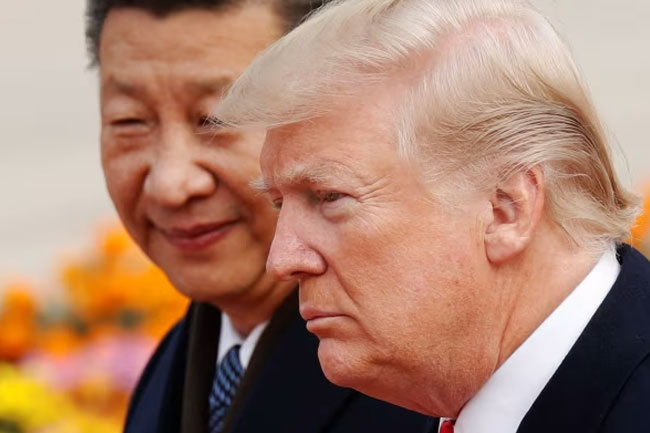Xi's Strategic Diplomacy in Southeast Asia Amid Trade Tensions
Amidst escalating US-China trade tensions, President Xi Jinping embarks on a strategic Southeast Asia tour forging alliances and securing economic ties with vital regional neighbors.
Published April 17, 2025 - 00:04am

Image recovered from arabnews.com
Chinese President Xi Jinping's recent diplomatic tour across Southeast Asia highlights China's increasing assertiveness in solidifying economic and political ties in the region. Against the backdrop of escalating trade tensions with the United States, Xi's visit to Malaysia represents a strategic maneuver to present China as a stable and reliable partner amidst global economic uncertainties.
In his visit to Malaysia, Xi met with King Sultan Ibrahim and Prime Minister Anwar Ibrahim in Kuala Lumpur. This visit, part of a larger regional tour covering Vietnam and Cambodia, was intended to strengthen bilateral relations and pave the way for enhanced cooperation across sectors such as security, trade, and technology, including AI development and visa liberalization. The visit culminated in the signing of 31 memorandums of understanding between Malaysia and China, spanning various fields, which reflects a deepening mutual economic engagement.
The backdrop of Xi's tour is a climate of trade tensions between the US and China, marked by the recent US announcement of a 90-day pause on new tariffs but with significant existing tariffs still in place. These tariffs, including those targeting Malaysia and other ASEAN nations, have disrupted global trade and imposed economic hardships on the targeted southeast Asian economies.
Various Southeast Asian nations, particularly those heavily reliant on exports like Malaysia and Vietnam, find themselves in a precarious position, needing to balance their economic relations between the US and China. Malaysia, identified as China's most substantial trading partner in the region since 2009, has seen its trade relations with China reaching a staggering total of $86.3 billion in the first ten months of the previous year alone.
Xi's tour is not merely an immediate response to recent economic frictions but rather a strategic long-term initiative to cement China's influence in Southeast Asia at a time when US policies under President Donald Trump have raised concerns across the region. Observers like Dr. Lim Kim Hwa of the Penang Institute underline the importance for Malaysia to maintain balanced relations with both economic behemoths, as Xi asserts China's rational and consistent approach to trade and diplomacy as opposed to what Malaysia views as erratic policy decisions from the US.
Throughout his speeches and published opinion pieces during the tour, Xi called for the defense of multilateral trade systems centered on United Nations frameworks, emphasizing stability in global industrial and supply chains. He advocated for a governance model that is fairer and more equitable, challenging the unilateral measures adopted by the US.
Despite the warm diplomatic rhetoric, analysts such as Oh Ei Sun from the Pacific Research Centre note that ASEAN countries, due to their need for economic diversification and security concerns, are unlikely to fully align with either China or the US. This ambivalence showcases the geopolitical complexities within which Southeast Asian nations operate, navigating between economic opportunities with China and longstanding commitments to the US.
Xi's engagements in Vietnam further emphasize China's intention to forge stronger ties with Southeast Asian neighbors. Despite Vietnam being heavily impacted by US tariffs, bilateral relations with China have also been bolstered through multiple cooperation agreements aimed at strengthening infrastructure, supply chain linkages, and green trade initiatives.
In conclusion, Xi's diplomatic offensive in Southeast Asia serves as a clear indicator of China's intentions to play a dominant role in the region's economic architecture. While Xi Jinping's narratives of partnership and stability were well-received, the region's response remains measured, as countries attempt to expertly balance their relations with the US and China. This diplomatic dance underscores the growing importance of Southeast Asia in the global economic landscape, caught at the intersection of major global trade currents.






